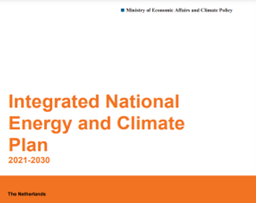Green Land Value Tax
Area: Design, planning and building
As a response to the regressiveness of housing taxation and the subsidisation model of housing renovation, (Muellbauer, 2018) has introduced the idea of a Green Land Value Tax (GLVT). The GLVT is composed of two elements, one based on built-up surface and another on unoccupied land. Energy-efficient buildings would pay the same tax as unoccupied land while energy-inefficient ones would pay a proportional increase by energy use. Such tax would create incentives to retrofit and improve the financial viability of increasing densities as the tax burden on built-up surface could be shared by different households in multiple occupation buildings but concentrated on one owner in the case of single-family dwellings.
In this regard, the study of policies such as mortgage interest deduction has pointed out how the lack of adequate taxation leads to the overconsumption of owner-occupied housing and increases in house prices (Fatica & Prammer, 2018; Poterba, 1984). On the one hand, targeting grants at households could incentivise retrofit among low-income homeowners for whom the impact of increased costs could pose affordability problems. On the other hand, increased taxation of energy-inefficient homes could help redistribute housing wealth toward younger homeowners in the most energy-efficient proportions of the stock and incentivise retrofit through increasing housing costs for house- wealthy households. However, the political feasibility of these drastic policy changes remains questionable.
Although there is no land value taxation in the Netherlands, the Dutch case remains particularly apposite to test green taxation proposals through imputed rent as done in Fernandez et. al (2024). The Netherlands lacks tax neutrality across tenures and imposes regressive taxes on energy consumption. These renovation incentivising policies result from a consumption interpretation of housing renovation as a one-off expense, not as an investment resulting in the appreciation of a financial asset (Copiello & Donati, 2021). Albeit under-taxing it according to the literature presented before, Dutch fiscal policy treats owner-occupied housing as an asset (Haffner, 2003). Aligning incentives for renovation with the asset interpretation of housing present in fiscal policy opens up paths for a set of green tax tools (Fernandez et. al, 2024).
This concept is an excerpt from the article Fernández, A., Haffner, M. & Elsinga, M. Subsidies or green taxes? Evaluating the distributional effects of housing renovation policies among Dutch households. J Hous and the Built Environ (2024). https://doi.org/10.1007/s10901-024-10118-5
References
Copiello, S., & Donati, E. (2021). Is investing in energy efficiency worth it? Evidence for substantial price premiums but limited profitability in the housing sector. Energy and Buildings, 251, 111371. https://doi.org/10.1016/j.enbuild.2021.111371
Fatica, S., & Prammer, D. (2018). Housing and the Tax System: How Large Are the Distortions in the Euro Area?*. Fiscal Studies, 39(2), 299–342. https://doi.org/10.1111/1475-5890.12159
Haffner, M. (2003). Tenure Neutrality, a Financial-Economic Interpretation. Housing Theory and Society, 20, 72–85. https://doi.org/10.1080/14036090310001903
Muellbauer, J. (2018). Housing, debt and the economy: A tale of two countries. National Institute Economic Review, 245, R20–R33. https://doi.org/10.1177/002795011824500112
Poterba, J. M. (1984). Tax Subsidies to Owner-Occupied Housing: An Asset-Market Approach. Source: The Quarterly Journal of Economics, 99(4), 729–752.
Created on 14-10-2024 | Update on 23-10-2024
Related definitions
Housing Retrofit
Area: Design, planning and building
Created on 16-02-2022 | Update on 23-10-2024
Read more ->Affordability
Area: Policy and financing
Created on 21-04-2023 | Update on 23-10-2024
Read more ->Related cases

Housing retrofit subsidies in the Netherlands
Created on 20-11-2024
M.Elsinga. Supervisor, M.Haffner. Supervisor, A.Fernandez. ESR12

